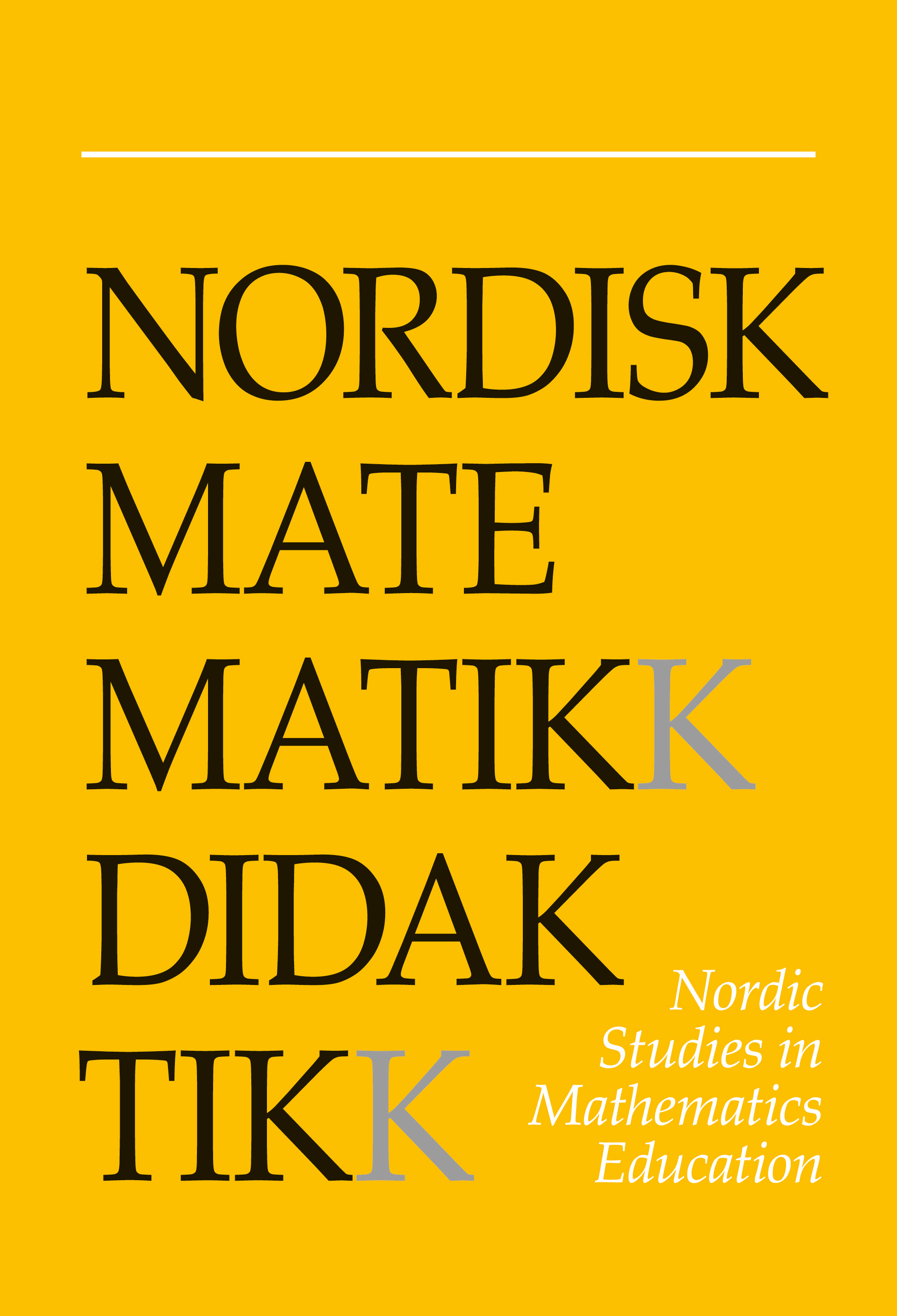A study of students’ concept images of inverse functions in Ireland and Sweden
DOI:
https://doi.org/10.7146/nomad.v22i4.148920Abstract
In this paper we focus on first-year university students’ conceptions of inverse function. We present results from two projects, conducted in Ireland and Sweden respectively. In both countries, data were collected through questionnaires, as well as through student interviews in Sweden. We draw on the notion of concept image and describe the components of students’ evoked concept images. The students’ responses involved e.g. ”reflection”, ”reverse”, and concrete ”examples”, while just a few students gave explanations relating to the definition of inverse functions. We found that the conceptions of inverses as reflections and reverse processes are important and relatively independent of local factors, and the data seemed to suggest that a ”reverse” conception is linked to an appreciation of injectivity more than a ”reflection” conception.
References
Attorps, I., Björk, K., Radic, M. & Viirman, O. (2013). Teaching inverse functions at tertiary level. In B. Ubuz, Ç. Haser & M. A. Mariotti (Eds.), Proceedings of the eighth congress of the European Society for Research in Mathematics Education (pp. 2524-2533). Ankara: Middle East Technical University and ERME.
Bagley, S., Rasmussen, C. & Zandieh, M. (2015). Inverse, composition, and identity: the case of function and linear transformation. Journal of Mathematical Behavior, 37, 36-47. https://doi.org/10.1016/j.jmathb.2014.11.003
Bayazit, I. & Gray, E. (2004). Understanding inverse functions: the relationship between teaching practice and student learning. In M. Johnsen Høines & A. B. Fuglestad (Eds.), Proceedings of the 28th conference of the International Group for the Psychology of Mathematics Education (Vol. 2, pp. 103-110). Bergen: PME.
Bingolbali, E. & Monaghan, J. (2008). Concept image revisited. Educational Studies in Mathematics, 68, 19-35. https://doi.org/10.1007/s10649-007-9112-2
Breen, S., Larson, N., O'Shea, A. & Pettersson, K. (2015). Students' concept images of inverse functions. In K. Krainer & N. Vondrová (Eds.), Proceedings of the ninth congress of the European Society for Research in Mathematics Education (pp. 2228-2234). Prague: Charles University and ERME.
Breidenbach, D., Dubinsky, E., Hawks, J. & Nichols, D. (1992). Development of the process conception of function. Educational Studies in Mathematics, 23, 247-285. https://doi.org/10.1007/BF02309532
Carlson, M. & Oehrtman, M. (2005). Research sampler 9: key aspects of knowing and learning the concept of function. Washington: Mathematical Association of America. Retrieved from http://www.maa.org/programs/faculty-and-departments/curriculum-department-guidelines-recommendations/teaching-and-learning/9-key-aspects-of-knowing-and-learning-the-concept-of-function
Dickerson, D. & Pitman, D. (2016). An examination of college mathematics majors' understandings of their own written definitions. The Journal of Mathematical Behavior, 41, 1-9. https://doi.org/10.1016/j.jmathb.2015.11.001
Dubinsky, E. & Wilson, R. T. (2013). High school students' understanding of the function concept. The Journal of Mathematical Behavior, 32, 83-101. https://doi.org/10.1016/j.jmathb.2012.12.001
Even, R. (1992). The inverse function: prospective teachers' use of "undoing". International Journal of Mathematical Education in Science and Technology, 23, 557-562. https://doi.org/10.1080/0020739X.1992.10715689
Gottlieb, C. (2002). Funktionslära [Theory of Functions]. Department of Mathematics, Stockholm University.
Oehrtman, M., Carlson, M. & Thompson, P. W. (2008). Foundational reasoning abilities that promote coherence in students' function understanding. In M. Carlson & C. Rasmussen (Eds.), Making the connection: research and practice in undergraduate mathematics (MAA Notes Volume 73) (pp. 27-41). Washington: Mathematical Association of America. https://doi.org/10.5948/UPO9780883859759.004
Pettersson, K., Stadler, E. & Tambour, T. (2013). Transformation of students' discourse on the threshold concept of function. In B. Ubuz, Ç. Haser & M. A. Mariotti (Eds.), Proceedings of the eighth congress of the European Society for Research in Mathematics Education (pp. 2406-2415). Ankara: Middle East Technical University and ERME.
Tall, D. & Vinner, S. (1981). Concept images and concept definition in mathematics with particular reference to limits and continuity. Educational Studies in Mathematics, 12, 151-169. https://doi.org/10.1007/BF00305619
Vinner, S. & Dreyfus, T. (1989). Images and definitions for the concept of functions. Journal for Research in Mathematics Education, 20, 356-366. https://doi.org/10.2307/749441
Wawro, M., Sweeney, G. F. & Rabin, J. M. (2011). Subspace in linear algebra: investigating students' concept images and interactions with the formal definition. Educational Studies in Mathematics, 78, 1-19. https://doi.org/10.1007/s10649-011-9307-4
Wilson, F. C., Adamson, S., Cox, T. & O'Bryan, A. (2011). Inverse functions: what our teachers didn't tell us. Mathematics Teacher, 104, 500-507. https://doi.org/10.5951/MT.104.7.0500
Downloads
Published
How to Cite
Issue
Section
License

This work is licensed under a Creative Commons Attribution-NonCommercial-ShareAlike 4.0 International License.



